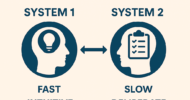I was two months into my first year of medical school when I experienced it for the first time.
“Room 214 … oh yeah, she’s a real pain. She will probably talk your ear off and come up with a new self-diagnosis that she will want to get a full workup for. She always does.”
Nervously, I laughed it off. I grew up in a household where doctors are held in high esteem — they’re geniuses, healers, and heroes without capes. I also grew up in a household in which I am the first physician (to-be) to ever come out of it. I never knew a doctor up-close and personal. The closest I’d ever been to a doctor before medical school was with my family physician, who I only saw for annual physicals and the two other times a year when sinusitis would get the best of me.
So naturally, when I entered medical school and saw so many successful physicians before me who were tasked with teaching and training me for the next four years of my medical career, I was starstruck. It was like meeting your heroes for the first time.
All your life, you watch them from afar on the pedestal you put them on. And when the blessed day comes that you finally meet them, you’re shocked when they don’t reconcile with the perfect image of them you had in your mind.
The thing is, all people are capable of being annoyed with other people, right?
We all have probably been annoyed by too many people before to even count on one hand. So why is it that when a doctor, another human, shows the slightest bit of annoyance towards another individual, that my wide-eyed and bushy-tailed first-year medical student self was so horrified?
I couldn’t believe a trusted physician would make such a comment about a patient who came into his office with her guard down.
I suppressed the comments he made about the patient, grabbed my notebook and stethoscope, knocked on the door of Room 214, and entered after a welcoming “Come in!”
A well-developed, well-nourished woman in no acute distress was waiting on the examination bed, pensively looking down at her swaying feet hanging off the side.
After a 10-minute discussion about what brought her in, I learned about her anxiety regarding a possible underlying genetic heart condition she was suspicious of. Her uncle and her paternal grandfather had both experienced heart attacks within the past three months, and she was petrified of the thought of “being next.”
Tears welled in her eyes as she thought of her family. I grabbed her hand, understanding the fear of uncertainty and watching those you love be victims of life-altering events.
One of the first lectures I ever received in medical school touched on the fact that a large portion of patient satisfaction comes from the quality of communication with the provider, and that stuck with me. In fact, sometimes people will come into the office just to speak to someone, be heard, and be comforted. As a patient, I understand that.
As a budding physician, I also understand the stress that comes with the strict 15- to 30-minute blocks we are given to speak with, examine and treat a patient.
I understand that what seems to be an easy visit for a single chief complaint of a stuffy nose can quickly turn into ordering an ECG after learning the patient had also fainted the night before.
We don’t enjoy the 15-minute visits any more or less than our patients who had to take time off of work and drive for 30 minutes, only to have time to speak about one or two of their many concerns.
If we could have it our way, I am sure many providers also wish they could dedicate one-hour blocks for all their patients so both parties could go home with peace of mind.
Putting myself in my attending’s shoes, I understand the frustration that can come with being 30 minutes behind schedule and going into an exam room that will probably set you further behind with the workup the patient may request.
Lunch will be sacrificed just to keep up on writing patient notes and continuing to see patients in an effort to prevent them from getting angry for being seen late. As providers, our basic needs are often superseded to tend to the needs of our patients.
Yet, I also understand the fear of a patient who is in the dark regarding their health.
I thanked the patient for letting me take a history and do a physical examination on her and informed her I would be back in the room shortly with the attending physician before I left.
“So, how was she?” my attending asked with a smirk.
My attending wasn’t a villain — he was just tired and overworked. My patient wasn’t a villain — she was just terrified and wanted someone trustworthy to unpack it with.
Having eight minutes left in the block of time to see her wasn’t helping anyone. The system is not perfect, but I knew at that moment I had to give my attending a helpful presentation to give him an accurate picture of the patient’s situation while also advocating for her and her rightful anxiety and fears, explaining to him the recent trauma she experienced.
Fast forward to my internal medicine rotation as a third-year medical student, I yet again was assigned a patient many providers deemed difficult.
Approaching her room, her screams in the hospital’s hallway grew louder as she called for a nurse. I picked up my pace, worried it may be an emergency.
As I entered her room, her screams stopped, interrupted by a smile covered by part of her nasogastric tube.
She was OK physically. Yet, emotionally she yearned for connection in a time of uncertainty and loneliness. I understood. I pulled up a chair by her bed and kept her company until it was time to report for rounds.
Saba Daneshpooy is a medical student.
Image credit: Shutterstock.com




























![Why true listening is crucial for future health care professionals [PODCAST]](https://kevinmd.com/wp-content/uploads/Design-3-190x100.jpg)
